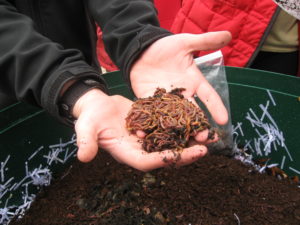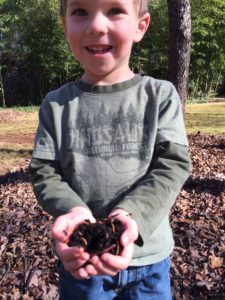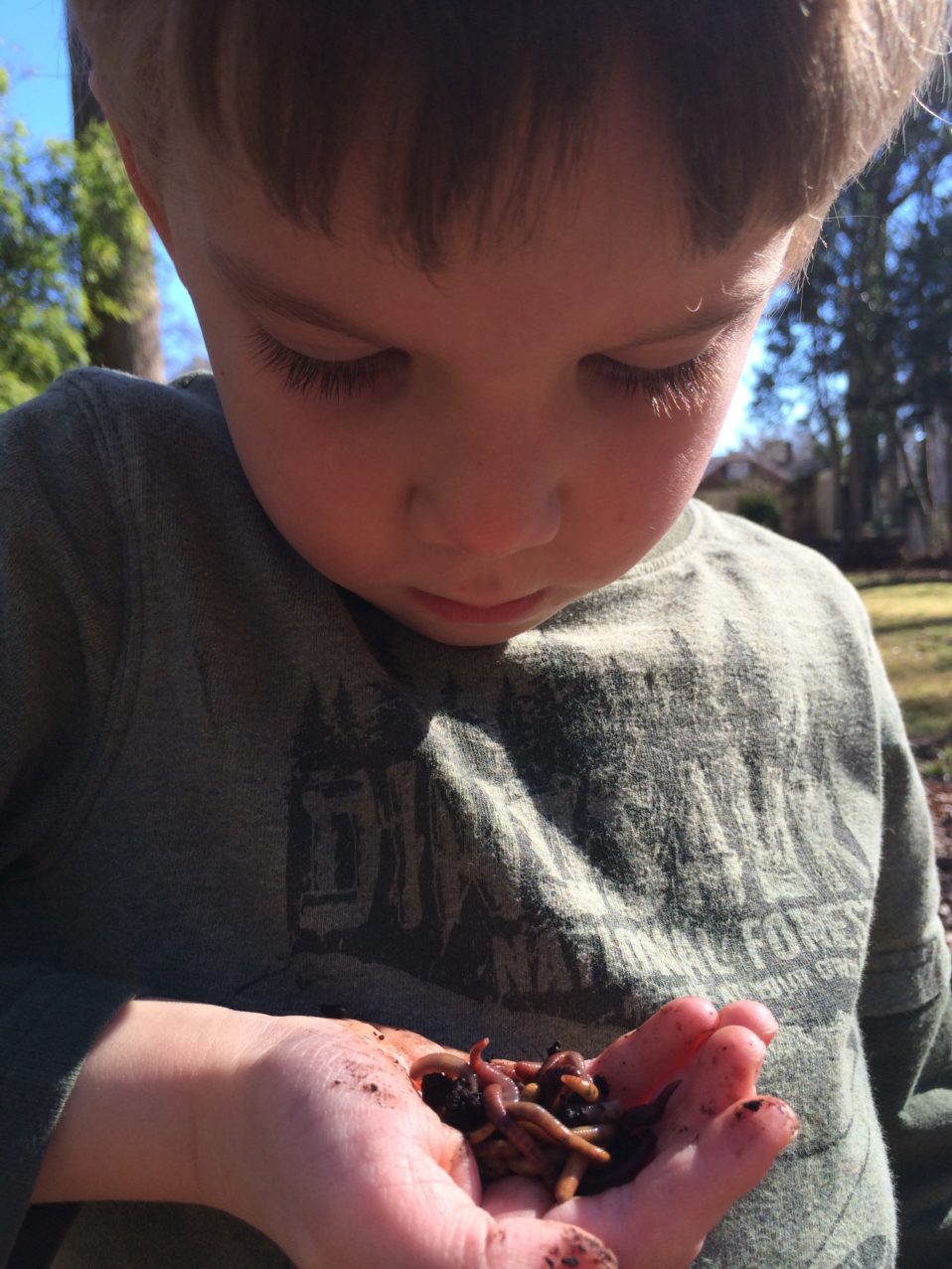Under my desk at the Nature Discovery Center, I keep a tub full of thousands of red wiggler earthworms. The worms are fun and they are also hard at work eating our food scraps like coffee grounds and banana peels.
Worm Composting (Vermicomposting) is easy, good for the Earth, good for your plants, and fun. Worm composting allows you to responsibly dispose of your vegetable food scraps while at the same time creating a nutrient-rich compost that you can use on your indoor or outdoor plants to make them healthier.
Overview of Worm Composting
Worm composting is a form of composting in which you feed your veggie kitchen waste to a specific type of earthworm known as red wigglers (scientific name is Eisenia Fetida). Vermicompost (worm poop) is better for plants than almost any other type of compost. Composting worms have three jobs: eat, poop, and make babies.
Worm Composting Container
Almost any container can be used as a worm bin. Worms breathe air through their skin, so air holes are very important. The simplest bin to use when getting started is a plastic storage tote or tub. You will need to drill holes in the sides so that the worms can get air. The composting worms won’t go out the holes because they don’t want to leave the nice comfy home that you have made for them. In fact, if they do leave, they will die without moisture, bedding, and food.
What Type of Worms are Used in Worm Composting?
Red Wigglers are the most widely used composting worms. These worms are used because they eat A LOT (up to half their weight every day!), tolerate being dug through, and are easy to keep contained indoors or out. Red wigglers can be purchased online and mailed to you. Red Wigglers can be found in nature in leaf litter or under logs but gathering your own to start a worm composting bin is very difficult.
Bedding for your Worm Compost Bin
Your red wiggler worms need bedding to live in. Think of the worm bedding as their furniture. Any carbon source can be used as worm bin bedding. For example, leaves, shredded office paper, shredded cardboard, and shredded newsprint (no glossy paper) all work well. The bedding must be moist at all times.
Moisture Level of your Worm Bin
Red Wigglers need a moist environment to live. The easiest way to provide moisture is to soak the bedding material in water before adding it to the bin during the set-up process. The ideal moisture level is like a damp sponge. The bedding should feel moist, but when you squeeze it, no water should drip out. You should never have standing water in the bottom of your bin.
Feeding Your Composting Worms
You can feed your worms any vegetable scraps including egg shells and coffee grounds (if you use a paper coffee filter, throw that in too!). You can also feed your worms lint from your clothes dryer and paper towels (use only paper towels that were used to clean up drink spills and do not have cleaning solution on them). Don’t feed them meet, eggs, butter, or oil. They also don’t do well with bread or cheese. Be careful not to overfeed your red wigglers as this can attract fruit flies and other pests because the red worms won’t be able to eat the food scraps fast enough. Here at the Nature Discovery Center, we feed our composting worms coffee grounds from the kitchen and Mr. Eric’s banana peel from his breakfast.
Harvesting the Worm Compost

You won’t harvest for the first time for at least 6 months, after that you can harvest more frequently. When it is time to harvest, simply dig down to the bottom of the worm bin and pull out a handful of worm castings (poop). This can be added directly to your soil with the worms included or you can pick out the worms and add them back to your bin.
I love teaching people worm composting so much that I started a website about it. Check it out if you are ready to begin your wiggly journey (www.wormcompostinghq.com) and soon you will proudly say “I’ve got worms!”.
By Henry Owen, Executive Director



